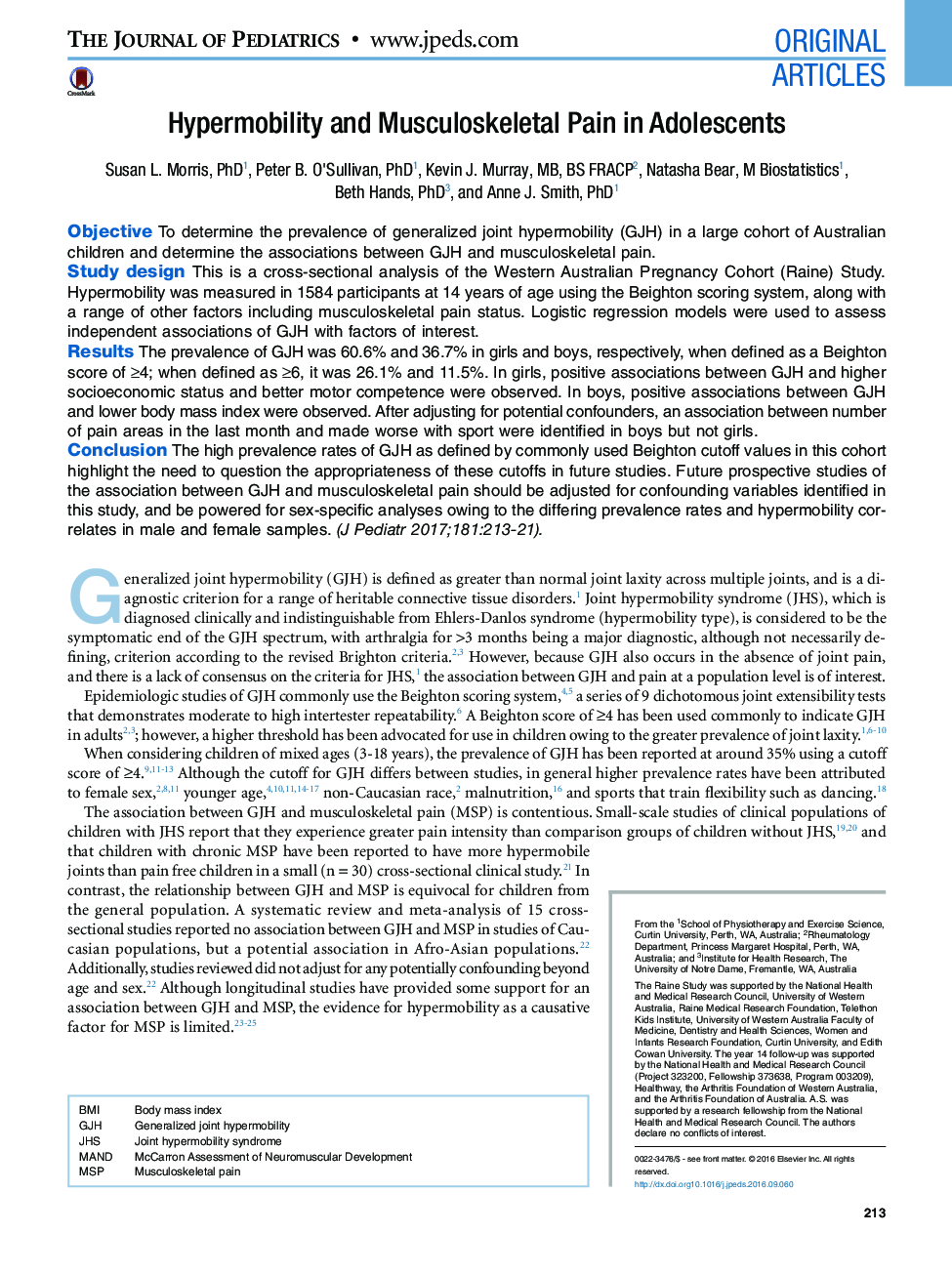| Article ID | Journal | Published Year | Pages | File Type |
|---|---|---|---|---|
| 5719214 | The Journal of Pediatrics | 2017 | 10 Pages |
ObjectiveTo determine the prevalence of generalized joint hypermobility (GJH) in a large cohort of Australian children and determine the associations between GJH and musculoskeletal pain.Study designThis is a cross-sectional analysis of the Western Australian Pregnancy Cohort (Raine) Study. Hypermobility was measured in 1584 participants at 14 years of age using the Beighton scoring system, along with a range of other factors including musculoskeletal pain status. Logistic regression models were used to assess independent associations of GJH with factors of interest.ResultsThe prevalence of GJH was 60.6% and 36.7% in girls and boys, respectively, when defined as a Beighton score of â¥4; when defined as â¥6, it was 26.1% and 11.5%. In girls, positive associations between GJH and higher socioeconomic status and better motor competence were observed. In boys, positive associations between GJH and lower body mass index were observed. After adjusting for potential confounders, an association between number of pain areas in the last month and made worse with sport were identified in boys but not girls.ConclusionThe high prevalence rates of GJH as defined by commonly used Beighton cutoff values in this cohort highlight the need to question the appropriateness of these cutoffs in future studies. Future prospective studies of the association between GJH and musculoskeletal pain should be adjusted for confounding variables identified in this study, and be powered for sex-specific analyses owing to the differing prevalence rates and hypermobility correlates in male and female samples.
